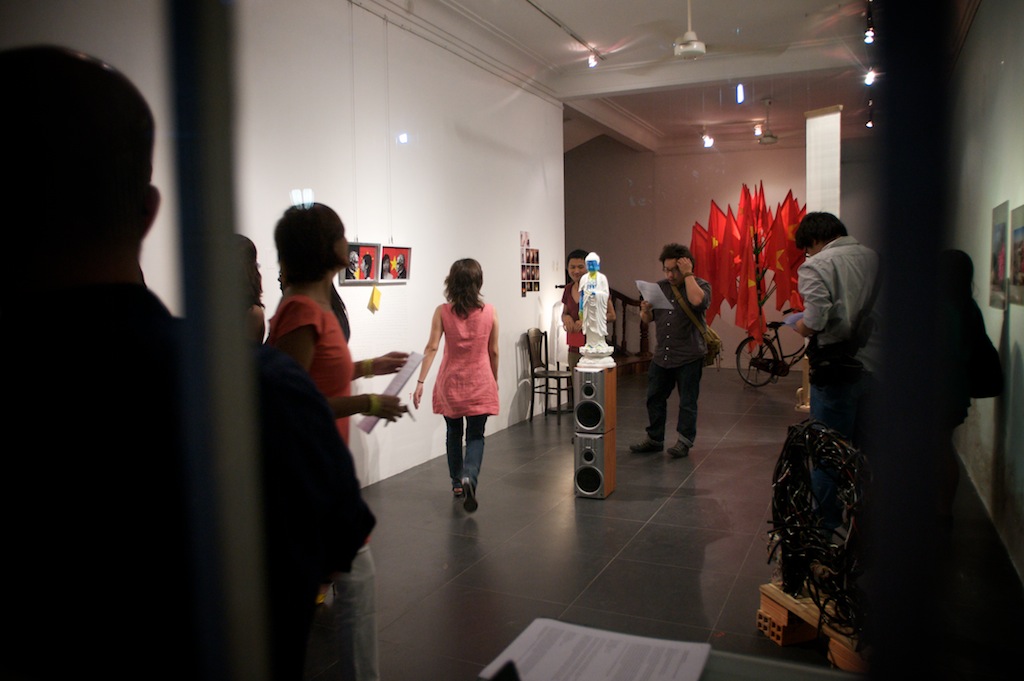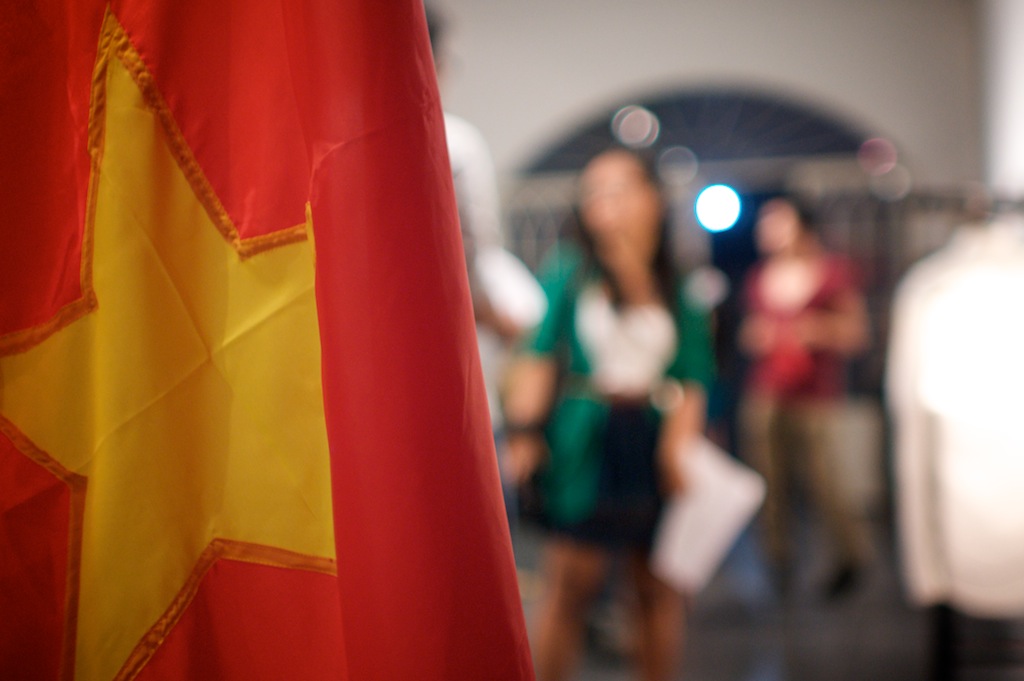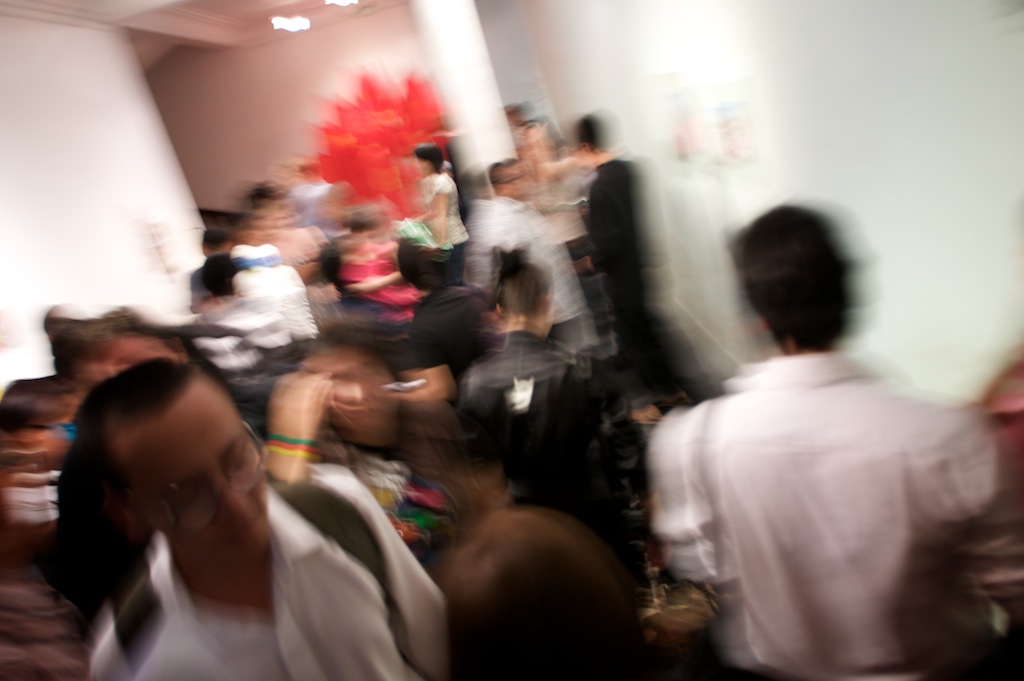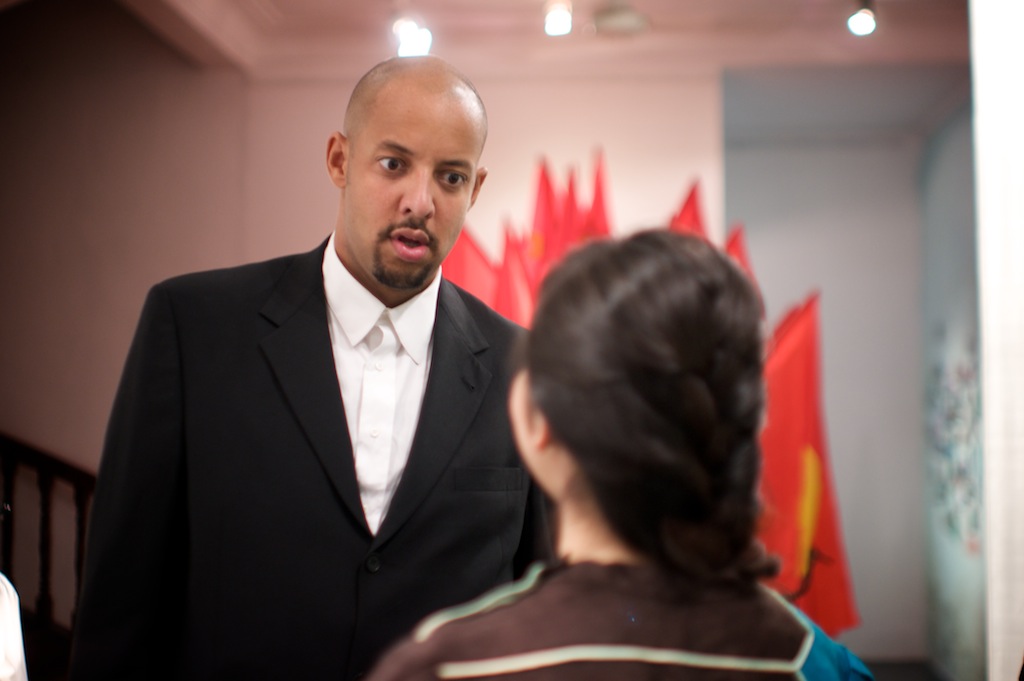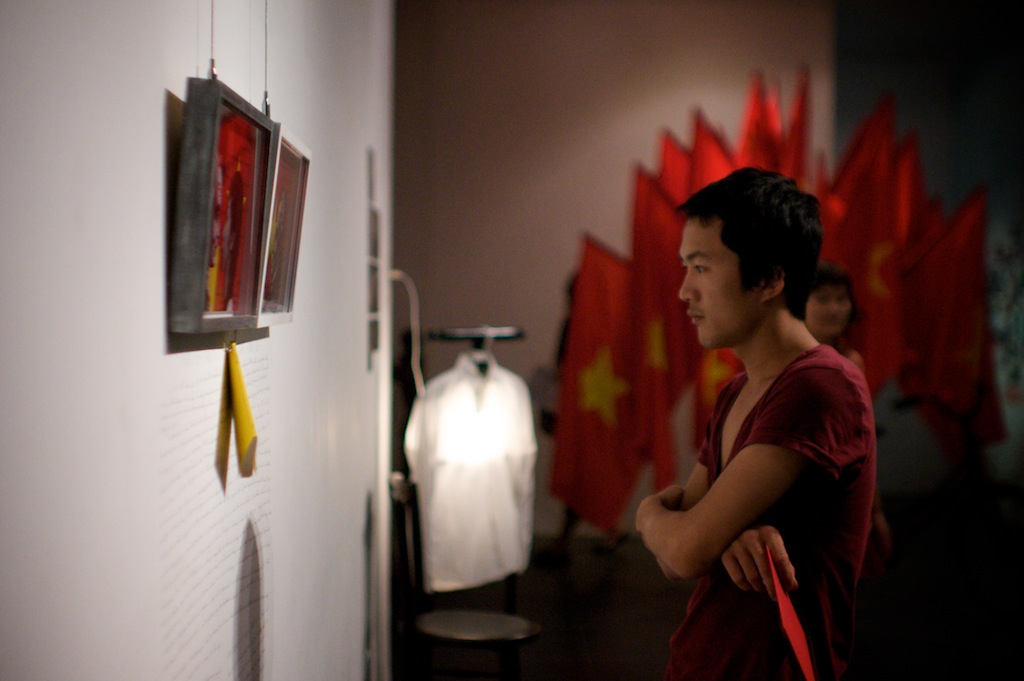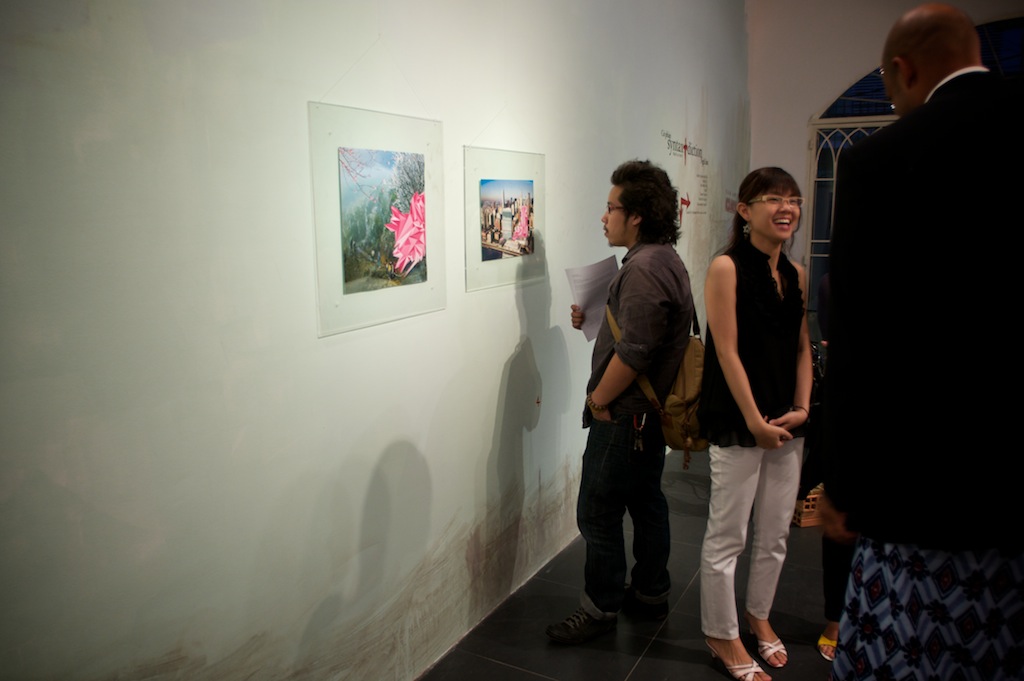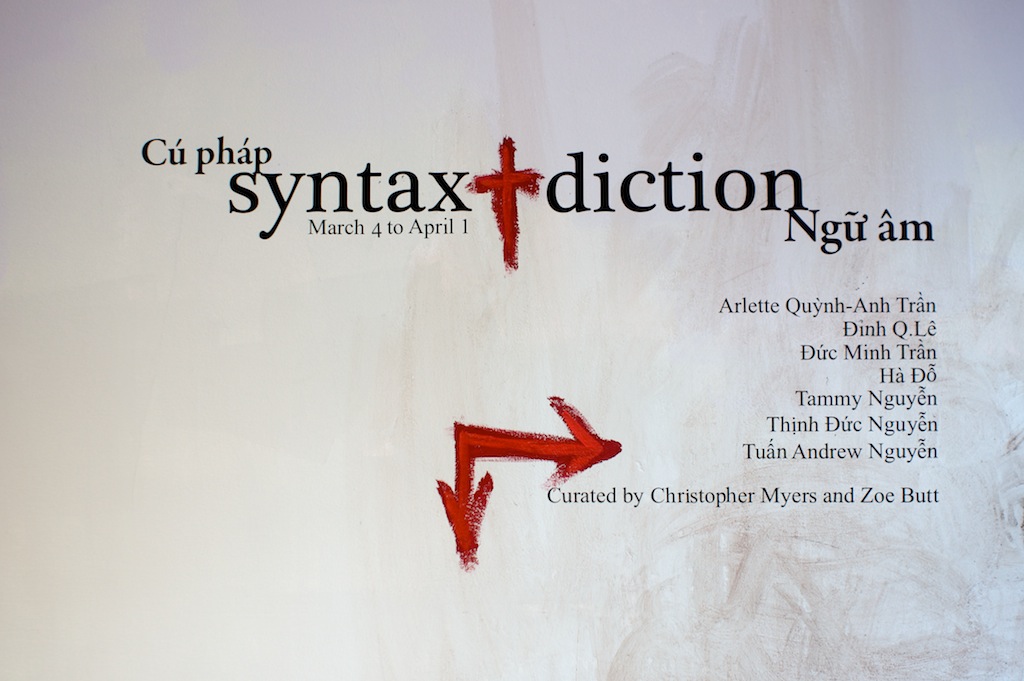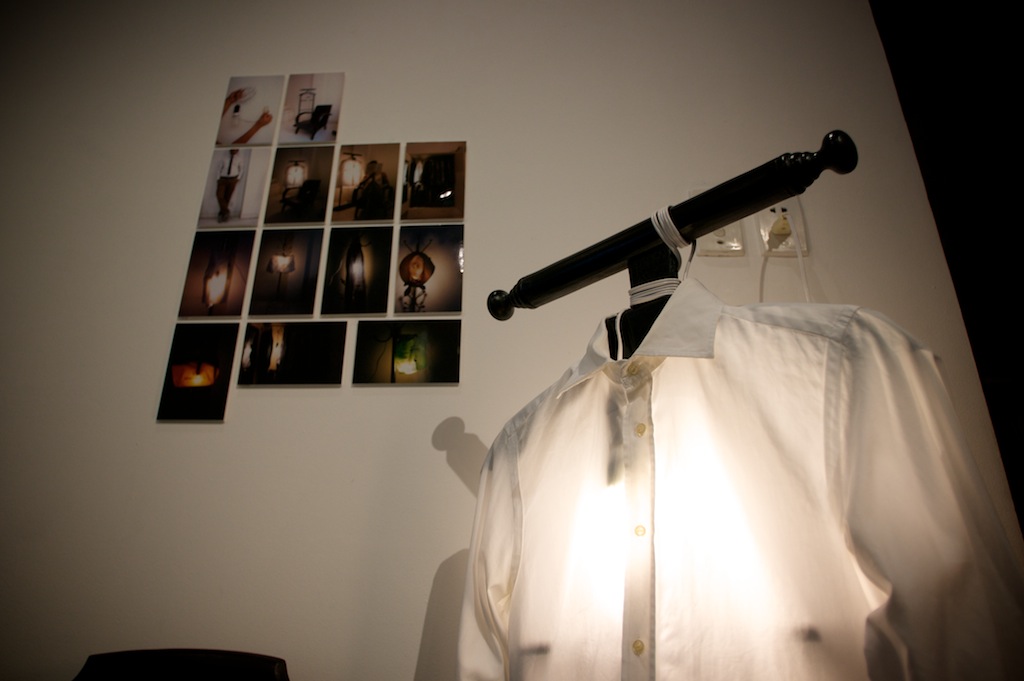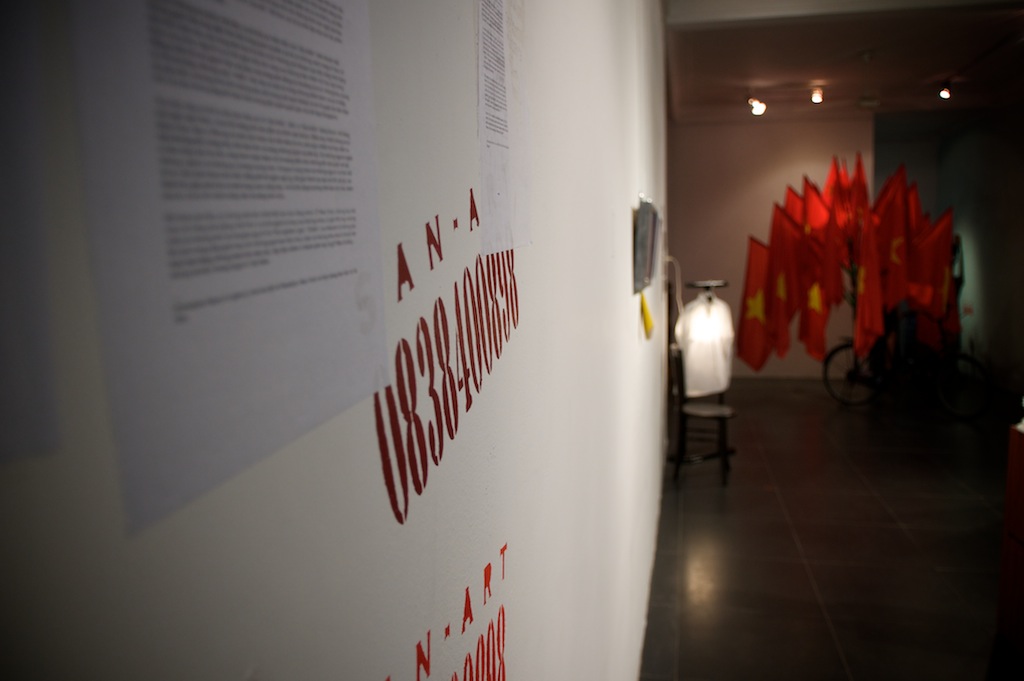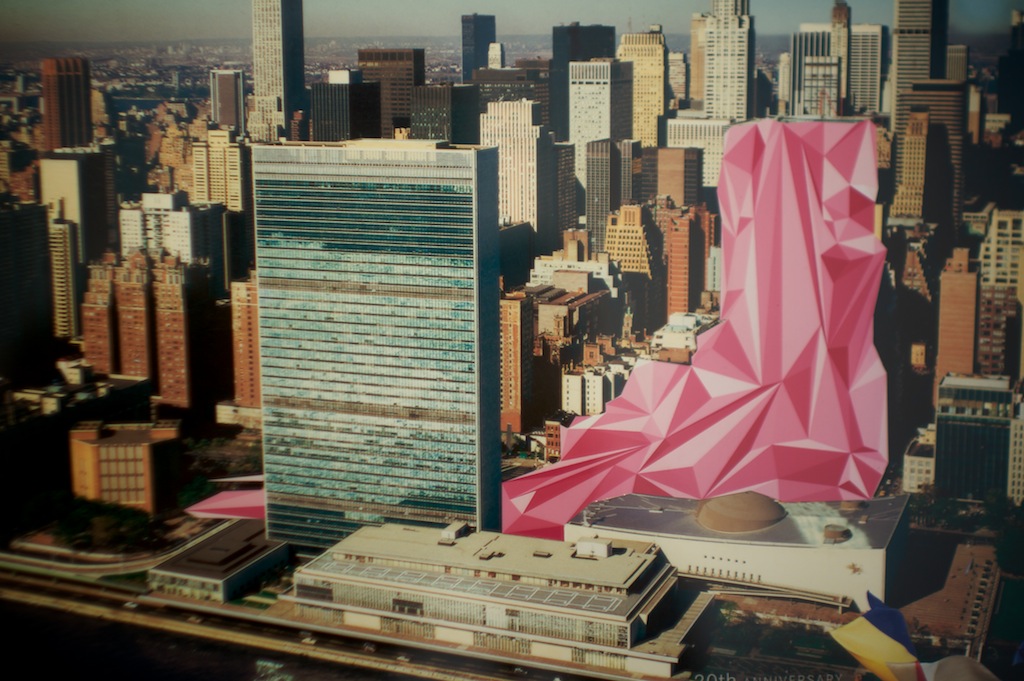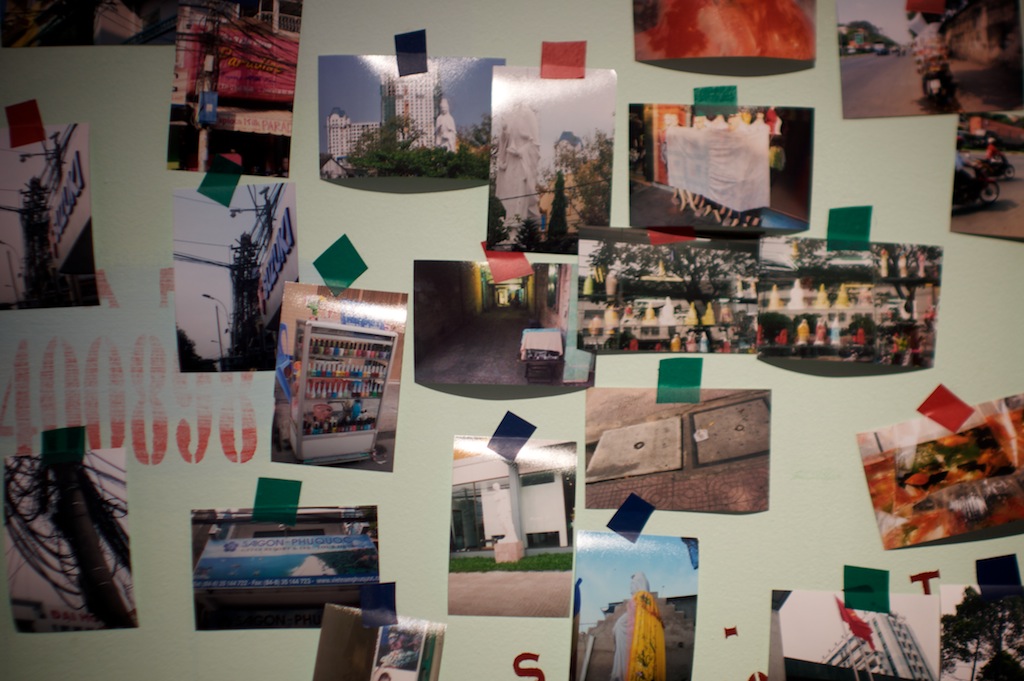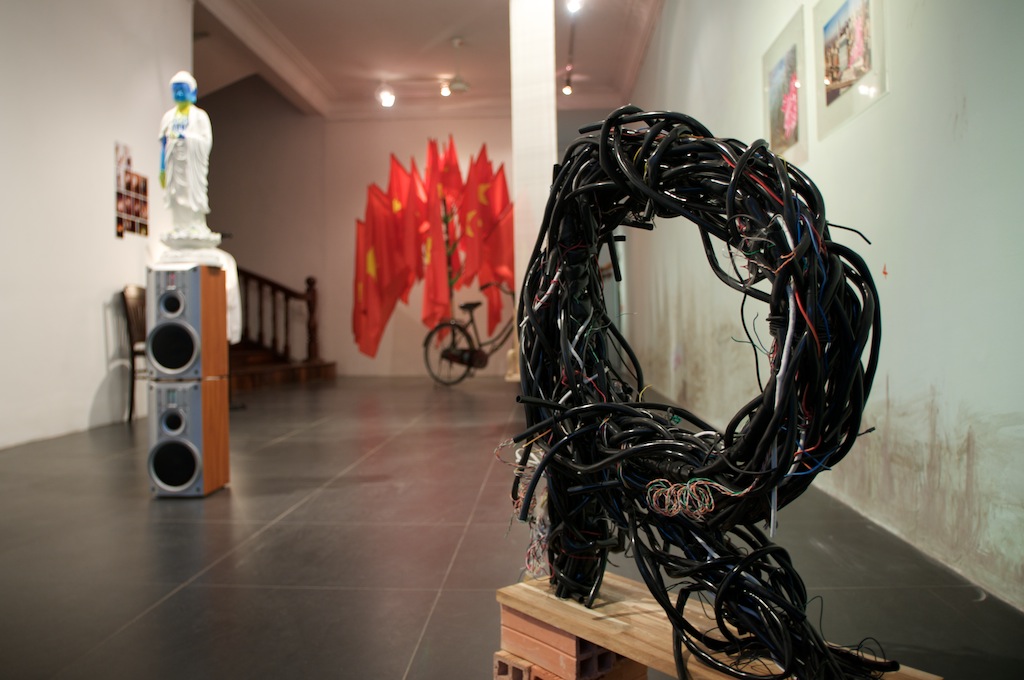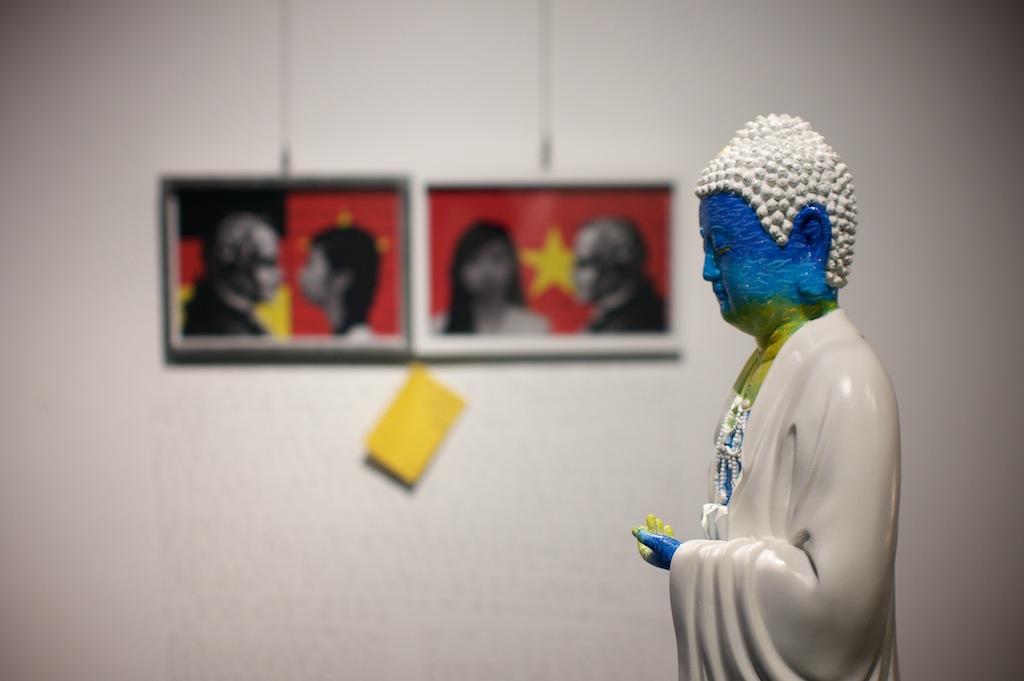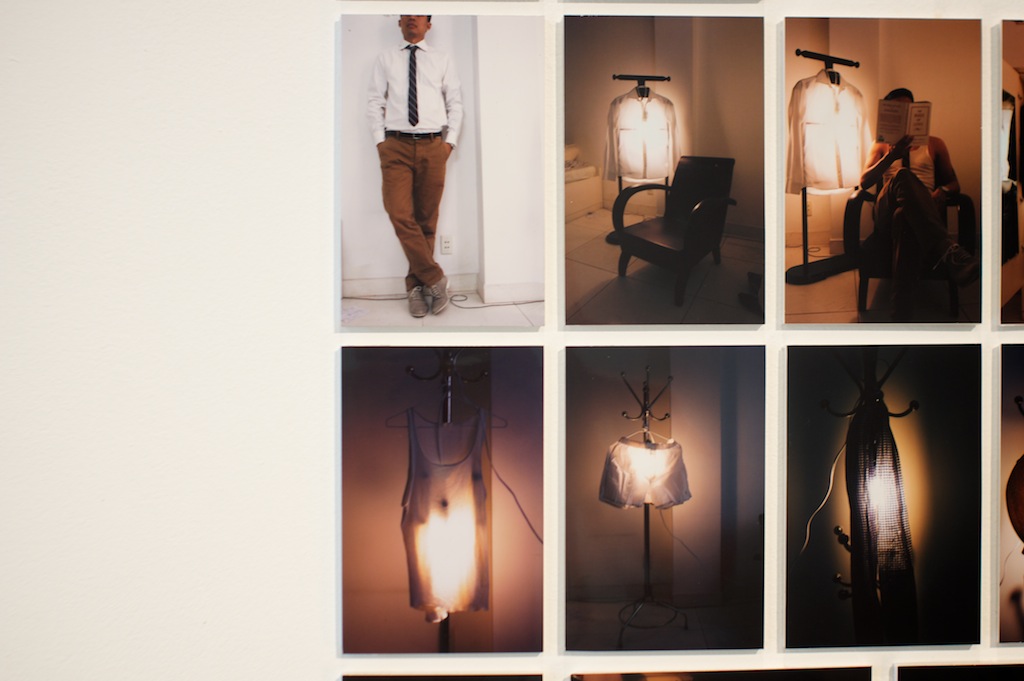Opening: 04.03.2010 @6pm
Exhibition on view until 15.04.2010
Location: Sàn Art
3 Me Linh
Binh Thanh District
Ho Chi Minh City
Vietnam
Syntax and Diction
There are Vietnamese words that cannot be translated into English.
Dã chiến is a phrase like that. One dictionary tells me it means a battle in an open field.
But I know it means something more. English doesn’t have words for things like this.
I know one phrase in Swahili that comes close, “jua kali.”
In Nairobi, Kenya it means “in the hot sun” literally.
But means something close to ” dã chiến” when people say it.
Its a certain way of making things, that includes recycling, refining, and repurposing.
Innovation and invention, are at the center of “jua kali” and ” dã chiến.” Which circumscribe the wide set of practices, that include making do when one doesn’t have the traditional materials or resources, or purpose built inventions for which resources and language haven’t been developed yet.
In Nairobi, “jua kali” looks like the ornate bars in windows of wealthy houses, beaten and cut from abandoned oil drums. The ornate way a woman ties her silkscreened Gucci fabric into a head scarf, the song of the man selling rags and bottles, bicycles, more duct tape and scrap metal than steel, disabled people selling time on a cell phone, the jiko stove recycled from a broken teapot, mini-buses hand painted with images of American hip-hop stars, all of these are “jua kali.” An aesthetics born under the hot sun.
In walking the streets of Saigon, ‘dã chiến’ plays across the faces of men playing cards in improvised sidewalk cafes with perfectly applied make-up, or in the constant sparkle of welding implements making adjustments on bicycles and architecture. The “battle in an open field” happens on the comedy stages of Ho Chi Minh City, different from the dramas of Hanoi. One can hear the echoes of these aesthetic battles in the sounds of knife sharpeners advertising their wares, or the chorus of doorbells in one of the many floored apartment buildings. There are tiny “chiến’s” fought in tire repair shops marking every corner, and in the flags draped superhero style over shirtless teenagers speeding down Le Loi celebrating Vietnam’s victory over Singapore in football.
Of course, my understanding of ‘dã chiến’ is wrong. I am writing and thinking in English, and there is no word that means the same thing. There is only an approximation. But there is another way of describing it, that aesthetic war fought in streets and homes, on altars, in cafes. There are artists like yourself, who can record sounds, or take photos, or even better bring objects to a gallery. And importantly, who can write in whatever language is most comfortable, about how this object, sound, or moment is made. How it resonates with the people who use or made it, and also with your own practice.
Every city is a battle of aesthetics. New York City’s chien’s skyscrapers compete with the gold teeth of musicians and the black robes of Jewish teachers. Nairobi’s rolling green hills compete with colonial bars and slums made entirely of corrugated tin. What are the battles of this city? Where is the evidence of the ‘dã chiến?’
————————
Christopher Myers is an artist and writer from Brooklyn, New York; currently holding it down in Saigon.
Translation with thanks to Tung Nguyen


